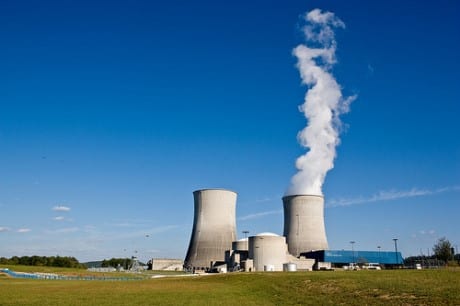More than four decades after construction began, the Watts Bar-2 reactor was finally connected to the grid on 3 June 2016. However, two days later, while operating at 12.5 percent power, the reactor automatically shut down.
According to the U.S. Nuclear Regulatory Commission (NRC), the reactor tripped when a high pressure turbine valve failed to open. As of 8 June 2016, the reactor has not restarted and no restart schedule has been fixed yet, according to a spokesperson for plant owner the Tennessee Valley Authority (TVA).
On grid connection TVA reported that “It is rewarding to see TVA taking the lead on delivering the first new nuclear unit of the 21st century and providing safe, affordable and reliable electricity to those we serve.”
TVA filed the construction license application for Watts Bar on 18 May 1971. On 18 September 1972, TVA applied for the exceptional authorization of certain site preparation activities, although it had not transmitted the final environmental impact statement and the construction license was still pending. TVA argued that startup of unit 1 by May 1977 “is vital in order to permit-TVA to meet its summer 1977 peak loads” and beyond:
“The present schedule for constructing the Watts Bar Nuclear Plant is predicated on beginning construction in October 1972. This schedule is extremely tight and failure to begin construction in October casts serious doubts on TVA’s ability to meet its load commitments in the 1977-78 period.”
TVA also insisted that cost of any delay be passed on to the ratepayer:
“6-month Delay: The total estimated monetary cost to the consumers of TVA power would be about $58 million for a 6-month delay in operation of the Watts Bar Nuclear Plant. In addition to the monetary effects, TVA would be required to burn about 3.4 million additional tons of coal and about 36 million gallons of fuel oil in its plants with attendant atmospheric emissions which would not otherwise be required.”
The construction license for the two 1,150-MW Pressurized Water Reactors (PWR) was issued in January 1973. The exact date of the pouring of the base slabs and thus the official constructions starts remains unclear. TVA does not provide a specific date on its website. The IAEA recently modified in its online Power Reactor Information System (PRIS) the construction-start date for Watts Bar-2 from 1 December 1972 to 1 September 1973.
The Watts Bar site is located in Rhea County, southeastern Tennessee approximately 50 miles northeast of Chattanooga. Construction delays and cost overruns plagued the reactor from the start. Construction was suspended in 1985 in part due to a decrease in electricity demand for TVA. In 2007, and based upon its projected increased energy demand, the TVA board approved a 5-year plan to complete the reactor.
The completion cost also escalated from US$2.5 billion in 2007 to US$4.5 billion in 2013 and to the final cost of the US$4.7 billion assigned by TVA’s board in February 2016. TVA is a corporate agency of the United States that provides electricity for business customers and local power distributors serving more than nine million people in parts of seven southeastern states.
Watts Bar units 1 and 2 are ice condenser designs, which makes them vulnerable to hydrogen buildup and containment failure. The Nuclear Regulatory Commission’s (NRC) Near-Term Task Force on the Fukushima Daiichi March 2011 accident included requests for assessment of flood risk at U.S. nuclear power plants.
In February 2013, the NRC censured TVA that they had been using outdated and inaccurate calculations in estimating the maximum potential flood threat should upriver dams be breached, the end result of which could be loss of cooling function and reactor meltdown. In February 2016, the TVA board announced that flood prevention measures built at the plant to meet post Fukushima requirements, had risen to US$ 300 million, compared to the US$ 120 million estimated four years ago.
Watts Bar-2 is the first commercial reactor to be connected to the grid in the United States since 1996, when Watts Bar-1 started up, 23 years after construction start.
Craig Morris (@PPchef) is the lead author of German Energy Transition. He directsPetite Planète and writes every workday for Renewables International.
Source: Renewables International. Reproduced with permission










